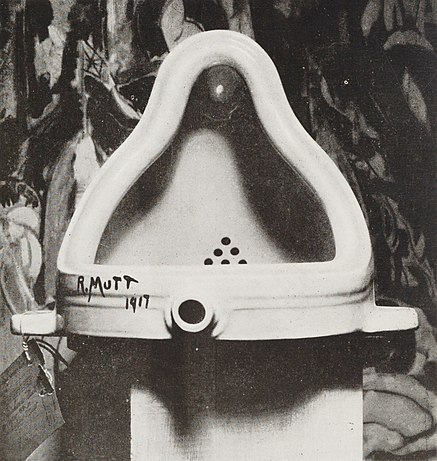 |
| Here's the invitation that showed up in my mailbox two weeks ago. |
'PATTERN'
the 2013 Solo Exhibition of
Sophie J. Knee!!!
Sharon Weiss Gallery
20 Lincoln Street
in the Short North of Columbus, OH
a black and white bunny, two fish, and a large heron.
" . . . painting the looser side of realism . . ." Writing about my life as an artist, plein air painting, traveling and whatever else might intrigue me.
 |
| Here's the invitation that showed up in my mailbox two weeks ago. |
 |
| "Late Summer Urn" • 8" x 6" Oil on RayMar Featherweight Panel with Smooth Canvas |
 |
| Robert #2 • 7-1/2 x 7-1/2" • Oil on 8-ply Museum Board |
 |
| Here's Robert 1 again, for comparison. Quite a style change! |
 |
| I know that I've been reading a lot of history lately, and studying French, but I can just see this guy as someone that could have gone to the guillotine. Must be the regal nose! |
 |
| I love a surface with paint from transparent to opaque, thin to thick. |
 |
| Robert #1 • 10-1/2" x 8" • Oil on unstretched canvas |
 |
| He looks different without all that blue tape. |
 |
| I think he looks pretty good as a square. |
 |
| Detail of Robert's ear and pony tail. Look at how cool that little spot of gray is in a sea of warm color! |
 |
| Skull of Richard III |
 |
| Portrait of Richard III |
 |
| Marcel Duchamp, Fountain, 1917. Photograph by Alfred Steiglitz |


 |
| Fielding questions from the crowd. I had so much fun with the university students. |
Had a lot of fun today at Ohio's Renaissance Festival, with none other than the Queen and her court.
The privies, such an important place.
Bearded minstrels, Vikings, and even fairies, finally!
Every surface plus the floor filled with frames, paintings and packing. All in preparation for delivery of 42 works to West Liberty University, West Virginia. My solo show there opens on October 5th.
And teaching a plein air workshop there on October 28 & 29!
When I was in Bhutan, in 2007, much was made of the impotance of the number 108. Guru Padmamasala, Ray, I know you are laughing, since I have no idea how to spell his name, rode a flying tiger to what is now Taktsang (the Tiger's Nest), and the tiger tore a demo into 108 pieces and where those pieces landed, monasteries grew up. With this act, Buddhism was brought to Bhutan. The number continues to have significance in many aspects of the culture including burials, and is also considered an auspicious number in the Hindu culture.
In the Western world, the ancient Greeks set forth the ideas of ratios and perfect proportions. They employed these in their architecture and in their daily lives. As artists we also use these same ideas in terms of compositional layouts. Things just 'feel right' if certain proportions are observed.
Before Mellifont Abbey was built, Irish architecture was very simple in style. With the coming of the Cistercians, was the beginning of grand architecture, not only of enormous proportions, but whose proportions had philosophical connections.
Photo: Taken from the kitchen, at the far right you just see a small portion of the lavabo. Behind that is the chapter house, protected from water decay by a covering. The large grassy area at the center of the cloisters is where the monks grew their herbs. The large stone ruins in the back is not original, the modern building is the visitors center. Between the visitors center and the chapter house is the altar of the church.
Here I am sitting in one of the lavabo's arches. In the distance behind me, would be the infirmary, and the warming room, the only room where the monk's could warm themselves by a fire.
Next is a section of the south cloister wall, with its Romanesque arches. Through the arches you see the refectory, where the monks took there meals, and in the far right corner, the kitchens. The architects chose a site near a river, so that they had clean, fresh water for cooking and bathing, and of course running water in their latrines, outside the abbey wall.
As I've said before, there was a segregation of the community of brothers. This only ended under The Second Vatican Council, in the 1960's during the Second Vatican Council and Pope John XXIII.
The photos show:
1. At the far left, the west wall are the ruins of the cellars, store rooms and the lay brothers quarters.
2. Next photo on the east side, were the quarters for the choir monks.
Tyler and Martin inside the Chapter House listening to our guide, whose name not a one of us could remember.
After years of traveling and visiting lots and lots of ruins, I am here to tell you that there is nothing better than walking a site with a knowledgeable guide with an enthusiasm for her topic.
We had such a guide at Old Mellifont. She was young, about 30, an artist, and had done extensive research on this site and its importance in the history of Ireland. But possession of facts doesn't make a good guide. This one had the gift of bringing history to life in a clear, concise a impelling manner.
Speaking in a quite voice, she held us in the palm of her hands for over 40 minutes.
Here is the lavabo. You see the upper half is made of rougher darker stone. This is not original, but and addition by the Moore family after Henry VIII dissolved the abbeys and gave the lands to rich families who supported the crown.
The beautiful and delicate colored stone of the original lavabo is where Mellifont gets its name. Melli referring to honey, so honey-colored, and the Irish had never seen anything like it!
The visitors center was filled with chunks of useful information as well as chunks of stone salvaged from the excavation of the site. One info board talked about the mason's marks.
Remember these communities were self-sufficient, and would include men from all walls of life. There was a hierarchy system, and the brothers were segregated into two groups: the choir monks, the educated, usually coming from families with money because getting an education took lots of money, these men were the thinkers, philosophers, scribes, and church leaders; and the lay monks, who did the work, farming, cooking, stone work, etc. There was no contact between these two groups except for a foreman to give work orders to the lay brothers. This system existed until very recently.
If a rich man wanted to rise up in the church quickly, the fastest way was to join a monastery. A man could rise through the ranks over time and become a bishop.
My transmissions stopped, and you expected to be finished with stone. But stone speaks too loudly to be silenced.
You will remember that we drove south out of Northern Ireland, with our plan to see the many sites in the Valley of the Boyne. The first site we came to was Monasterboise, an early Christian site founded by St. Buite who died c. A.D. 521. No building as old as this exists. The round tower was built c. A.D. 968, shortly after the dreaded Vikings were finally and bloodily thrown out. The tower was damaged by fire in 1068. The great Cistercian Mellifont Abbey was founded in 1142, and Monasterboise fell into decay.
The Cistercians were a spin off group from the Benedictine monks, and are referred to as the White Friars. The color refers to the color of the habits. The Black Friars are the Dominicans, and the Grey Friars I believe, are Augustinians. I was sorry I didn't ask the guides which order the Skellig Michael friars belonged to. But they certainly followed Benedict's rule of leaving the world behind in order to be closer to God.
I will say this now, I really have no affiliation with a religion, but I love history, and no matter how the Christian community has changed over time, I have a great respect for these early men and women of faith. My interest is truly in the medieval mindset, history, and in finding connections to our lives today.
I said to my grandson, Tyler, "I feel good whenever I am inside a monastic site. I think I was a monk in a past life." He responded thoughtfully, "That's interesting, since you're not a Christian."
But these Cistertians, they were a hard bunch for sure.
In case you didn't know, you can click on these images and enlarge them a bit.
I has posted the floor plan of the abbey here. And a photo of what is left of facing south. At the back of the scene, you see what is left of the lavabo, where the monks would ceremonially wash their hands, face, and tonsure, which represents Christ's crown of thorns.
Behind the lavabo on the left is the refectory, where the monk's ate.
